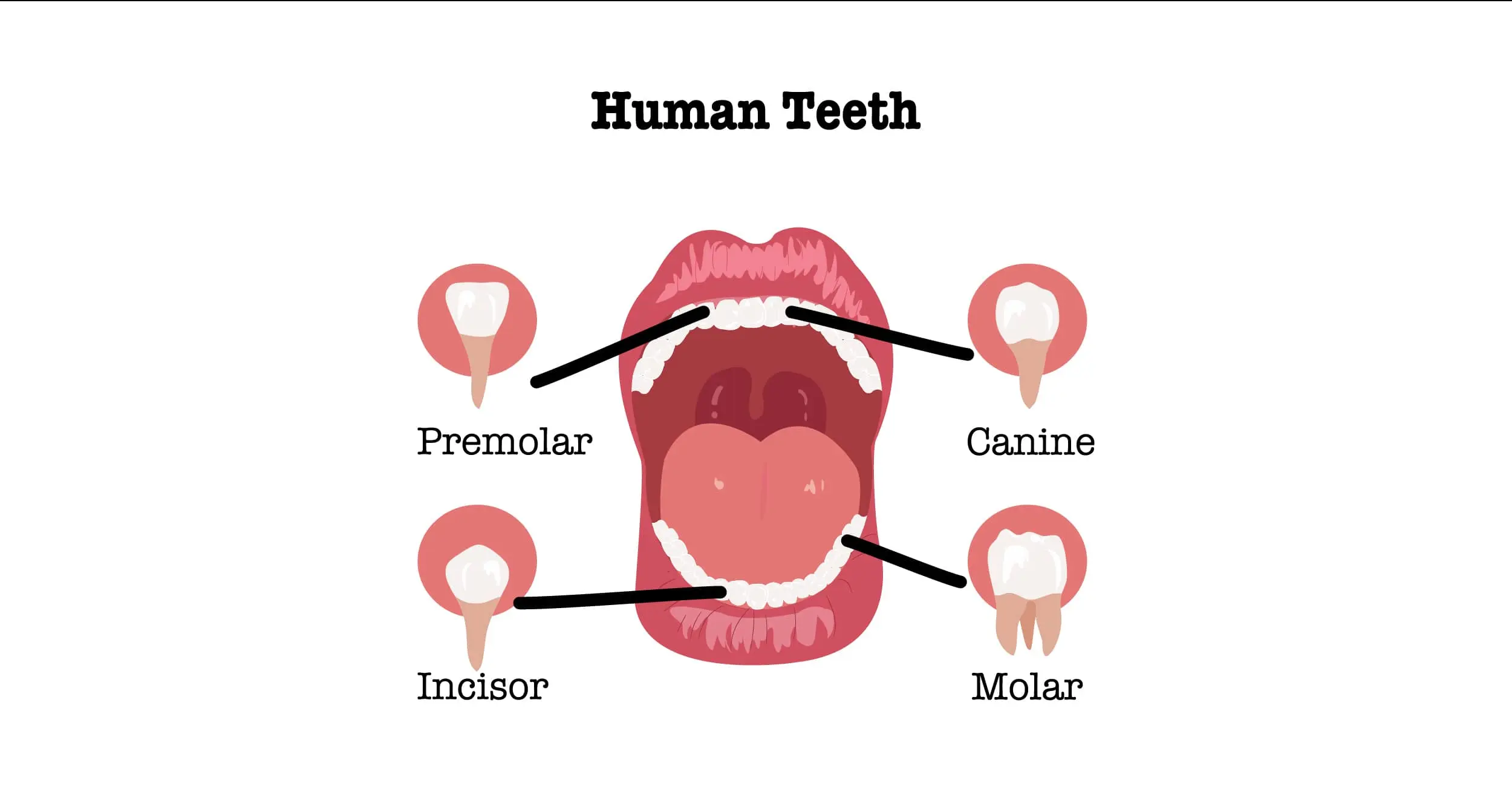You must have wondered at some point in your life how many teeth do humans have or, at least, sought an answer to the question of how many teeth do we have. You have probably attempted to count them using a mirror or just imagining what your mouth looks like on the inside. This article will save you that trouble. It will answer the famous question: How many teeth do humans have?
Over the course of your life, you will have two separate sets of teeth1, the primary teeth and the secondary teeth.
The primary teeth are what we commonly refer to as baby teeth. As early as the age of five, children start losing their baby teeth, which are originally 20, and start developing their secondary teeth. By your late teens, you should have a complete set of adult teeth, a total of 32.
So, in answering how many teeth do we have: As a baby, you have 20 teeth, and, as an adult, you have 32!
Your teeth are divided among incisors, which are eight, canines, which are four, premolars, which are eight, and molars, which are 12. The majority of people cannot fit that many teeth into their mouth. Thirty-two is a big number!
Too many teeth, often known as overcrowding, can lead to teeth that are misaligned, that decay at a higher rate, and that have an increased risk of periodontal disease2. Many people get their wisdom teeth removed for this reason.
Each of the 32 teeth serves a specific purpose3.
There are eight incisors in all. Your top and bottom four front teeth are sharp for grasping and cutting food.
Canine teeth are four in total. They are the pointed teeth on the top and bottom of the mouth. They have cusps that allow them to grip and tear food.
There are eight premolars. These teeth are anatomically and morphologically located between the canines and the molars. Premolars are similar to molars in appearance, but they have two cusps. Food is sliced and torn by premolars.
Molars are 12 in all. On the top and bottom, left and right, you have eight molars. They have large chewing surfaces that grind down food before swallowing it. Wisdom teeth, or your third set of molars, can appear as late as your early twenties and are frequently extracted.
Given that each of your teeth has a particular function, it is very important to continue taking care of them. To avoid cavities and other dental health problems, take care of your teeth and maintain your gums and oral hygiene4.
One way to ensure proper dental hygiene and to take care of the many teeth that you have is to follow and stick to a routine that repairs, if needed, maintains, and protects your teeth and the inside of your mouth, including your tongue and gums. With mouth washes and mouth rinses, you would rediscover an efficient dental care routine, including brushing, flossing, and rinsing. Keep your entire mouth clean!
In short, certain lifestyle factors might prevent you from following a dental care routine that protects all 32 of your teeth! That is why, opt for a comprehensive line of mouthwash products with the power of essential oils that complement your needs and lifestyles choices.
References:
https://my.clevelandclinic.org/health/articles/11179-teeth-eruption-timetable
Niemiec, B. A. (2008). Periodontal disease. Topics in companion animal medicine, 23(2), 72-80.
Williams, K. B., Gadbury-Amyot, C. C., Krust-Bray, K., Manne, D., & Collins, P. (1998). Oral health related quality of life: A model for dental hygiene. Journal of Dental Hygiene, 72, 19-26.
